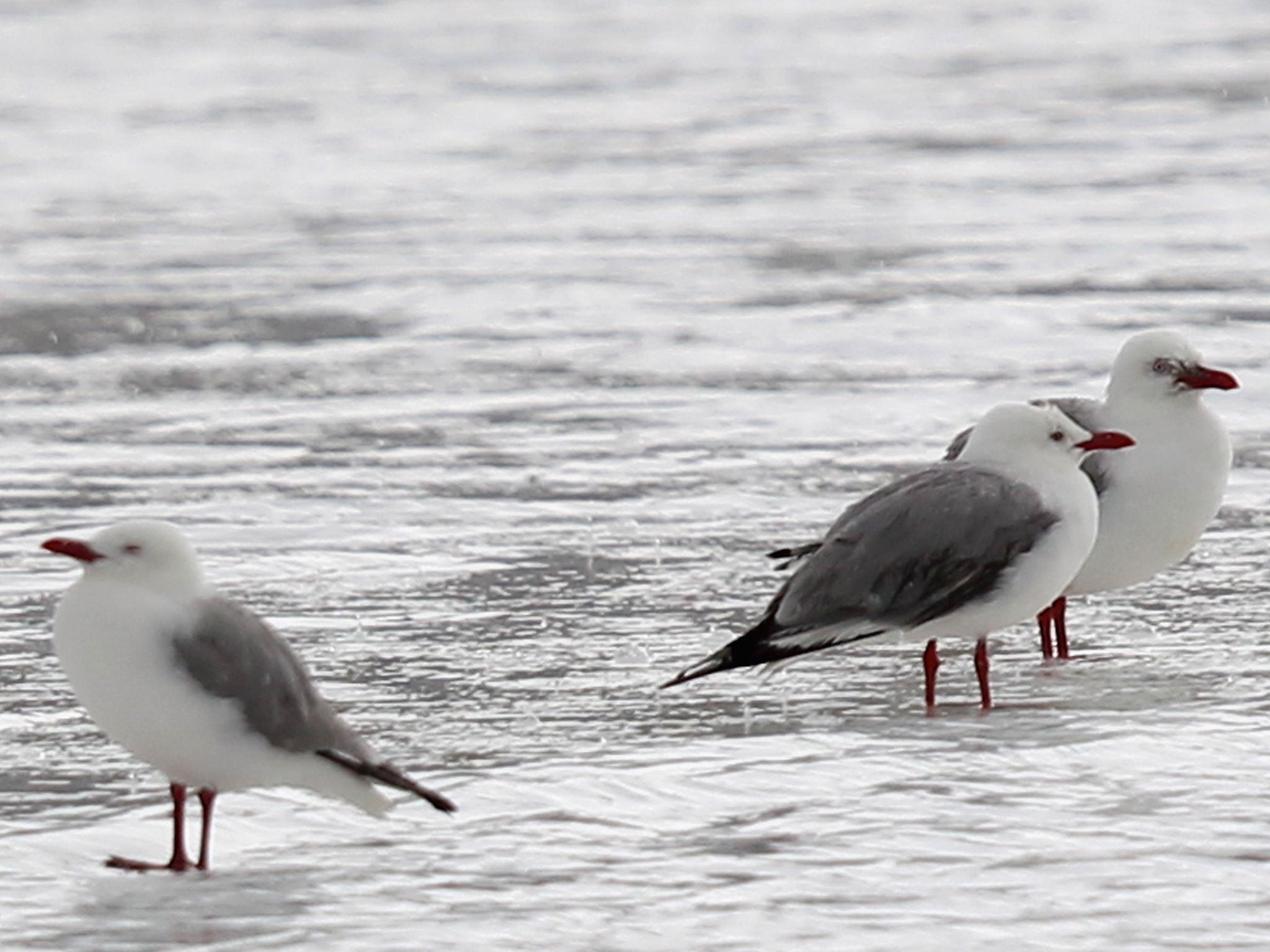Almost every seabird 'will have eaten plastic by 2050' because of ocean pollution
Study says nine out of ten species already get rubbish lodged in their stomachs

Your support helps us to tell the story
From reproductive rights to climate change to Big Tech, The Independent is on the ground when the story is developing. Whether it's investigating the financials of Elon Musk's pro-Trump PAC or producing our latest documentary, 'The A Word', which shines a light on the American women fighting for reproductive rights, we know how important it is to parse out the facts from the messaging.
At such a critical moment in US history, we need reporters on the ground. Your donation allows us to keep sending journalists to speak to both sides of the story.
The Independent is trusted by Americans across the entire political spectrum. And unlike many other quality news outlets, we choose not to lock Americans out of our reporting and analysis with paywalls. We believe quality journalism should be available to everyone, paid for by those who can afford it.
Your support makes all the difference.Almost every seabird – from the gregarious kittiwake to the wandering albatross – will have eaten some kind of plastic object by the middle of this century, a systematic survey of marine pollution has found.
So much plastic waste is ending up in the oceans that 99 per cent of seabird species and 95 per cent of individuals within each species will end up swallowing some of it by 2050, scientists said.
The researchers have calculated that nine out of ten species of seabird are already having plastic rubbish lodged in their stomachs, causing untold damage to their chances of reproducing successfully.
A review of previous studies into the effects on seabirds of plastic waste floating in the sea, combined with a global map of where plastic objects are more likely to be found in the oceans, has for the first time revealed the true scale of the pollution threat.
In 1960, scientists found plastic in the stomachs of about 5 per cent of seabirds. This rose to 80 per cent by 2010 and the increase was directly correlated with the exponential increase in plastic being produced and then dumped into the sea, the scientists said.
Plastic production has doubled every 11 years since the 1950s and it is estimated that as much plastic will be manufactured over the next 10 years than during the entire period since 1950 to the present-day – with a corresponding increase in the amount of plastic waste ending up in the oceans, the researchers said.
“For the first time we have a global prediction of how wide-reaching plastic impacts may be on marine species,” said Chris Wilcox, principal research scientist at the Commonwealth Scientific and Industrial Research Organisation in Hobart, Australia.
“We predict, using historical observations, that 90 per cent of individual seabirds have eaten plastic. This is a huge amount and really points to the ubiquity of plastic pollution,” Dr Wilcox said.
Plastic damages seabirds by restricting their movements, blocking their gut or by increasing their exposure to toxins that leach from the plastic into their internal tissues and organs. Plastic objects are now ubiquitous in the marine environment, with concentrations reaching as high as 580,000 items per square kilometre, the scientists said.
“We’re pumping huge amounts of plastic into the environment and it’s essentially getting into every species in the marine ecosystem,” Dr Wilcox said.
It takes decades and even centuries for plastic to degrade and even then it is broken down into smaller and smaller pieces that can be ingested by smaller sea animals, such as plankton, with unknown consequences for the marine food chain.
Seabirds are at particular risk because they tend to be attracted to brightly coloured objects floating on the sea surface, which they mistake for food. Some individual seabirds have been found with dozens of plastic objects in their intestines, ranging from bottle caps and pens to plastic bags and the fibres used in synthetic clothes.
“We are most concerned about species such as penguins and giant albatrosses, which live in areas near the mainland shore, islands or coral reefs, where they are part of a large complex ecosystem of animals feeding on each other,” said Erik van Sebille of the Grantham Institute at Imperial College London, who was part of the study published in the journal Proceedings of the National Academy of Sciences.
The scientists emphasised that controlling the handling and disposal of plastic waste can have a dramatic impact on reducing the amount of rubbish that ends up in the oceans and the threat it poses to marine animals such as seabirds, fish and turtles.
Britta Denise Hardesty, of the CSIRO and co-author of the study, said: “Even simple measures can make a difference. Efforts to reduce plastic losses into the environment in Europe resulted in measurable changes in plastic in seabird stomachs within less than a decade, which suggests that improvements in basic waste management can reduce plastic in the environment in a really short time.”
Join our commenting forum
Join thought-provoking conversations, follow other Independent readers and see their replies
Comments